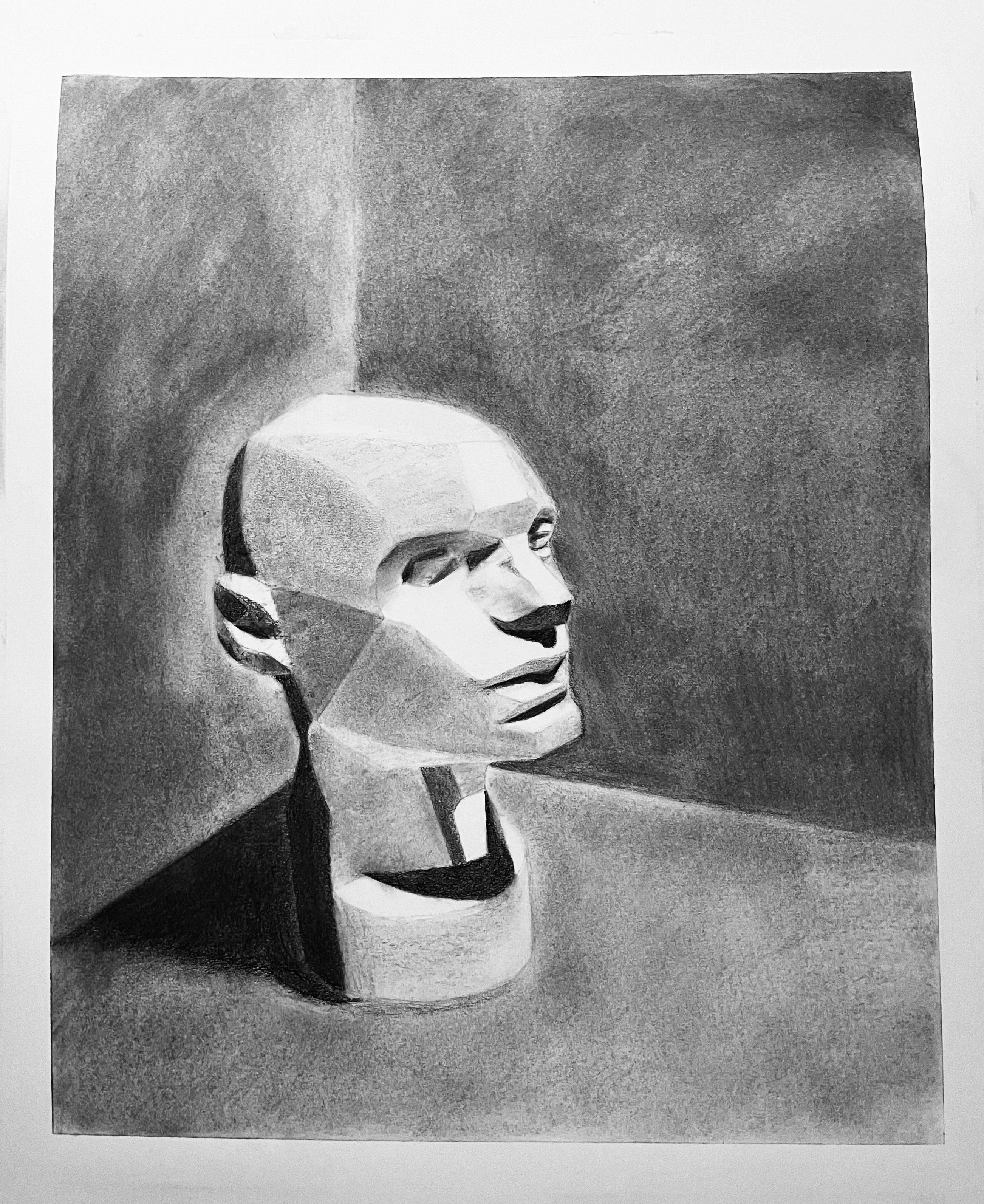
What you’ll practice
Spheres and cylinders with clear light direction, grouped values, and controlled edges for a believable sense of volume.
Pencils & setup
- HB, 2B, 4B pencils; kneaded & vinyl erasers; sharpener.
- Single light source from one side; simple forms.
Edge plan
- Cast shadow edge = crisp. Turning edge = soft.
- Reflected light stays in the shadow family (not too light).
Step-by-step
1
Light drawing
Outline forms; mark light direction arrow.
2
Group values
Fill shadow family as a single flat tone. Keep lights clean.
3
Turn the form
Add halftones in lights; deepen core shadow. Work in layers, not smudges.
4
Edges & accents
Sharpen cast edges; soften turning edges; tiny highlight last.
5
Refine
Lift haze with kneaded eraser; restate key darks with 4B for focus.
Tips
- Hatch with the form; keep strokes consistent per plane.
- Blend lightly (if at all); prefer layered pencil values.
- Keep whites clean—avoid gray smudges in highlight zones.
Troubleshooting
- Smudgy mud: Too much rubbing—lift, re-state flats, and layer.
- No volume: Edge hierarchy missing—soften turning edge, sharpen cast.
- Boring values: Increase the gap between light/mid or mid/dark a notch.
